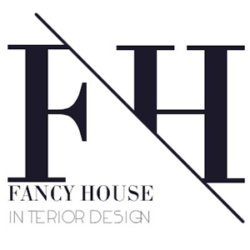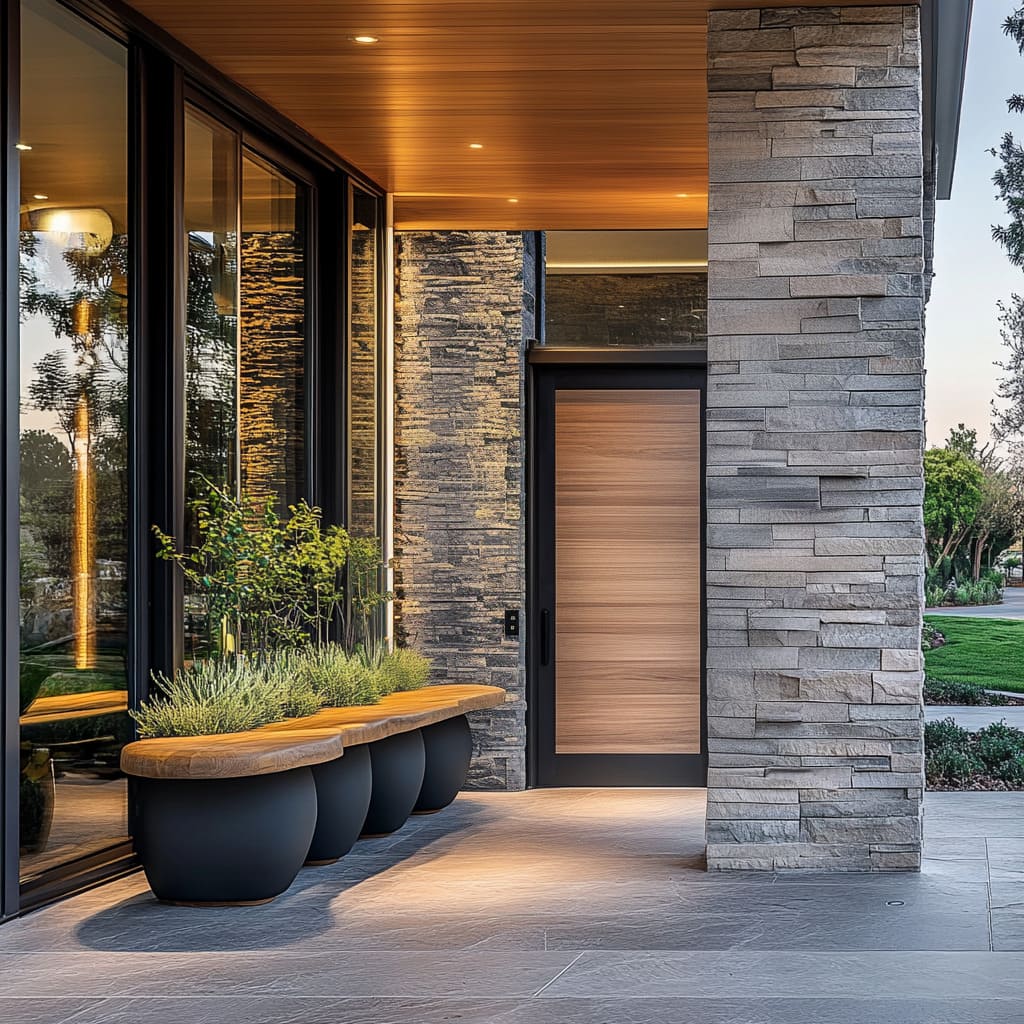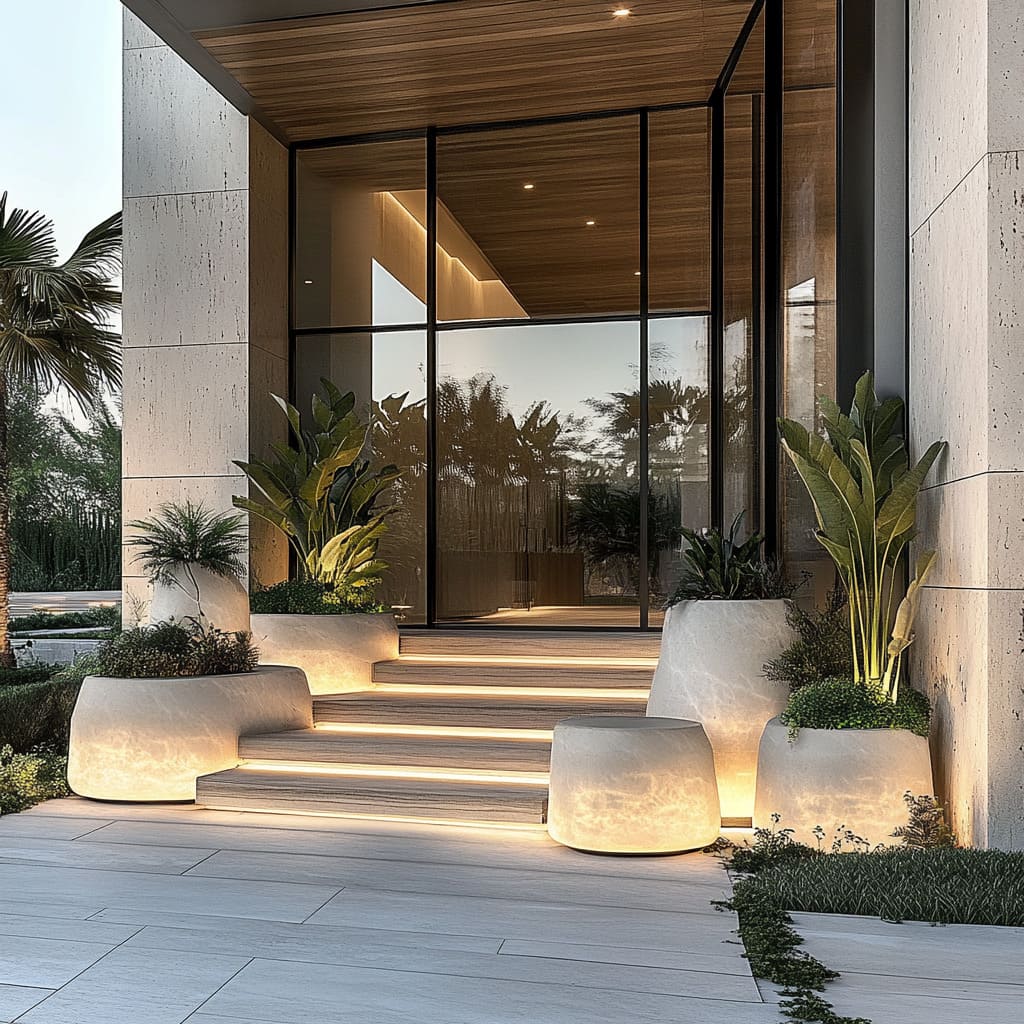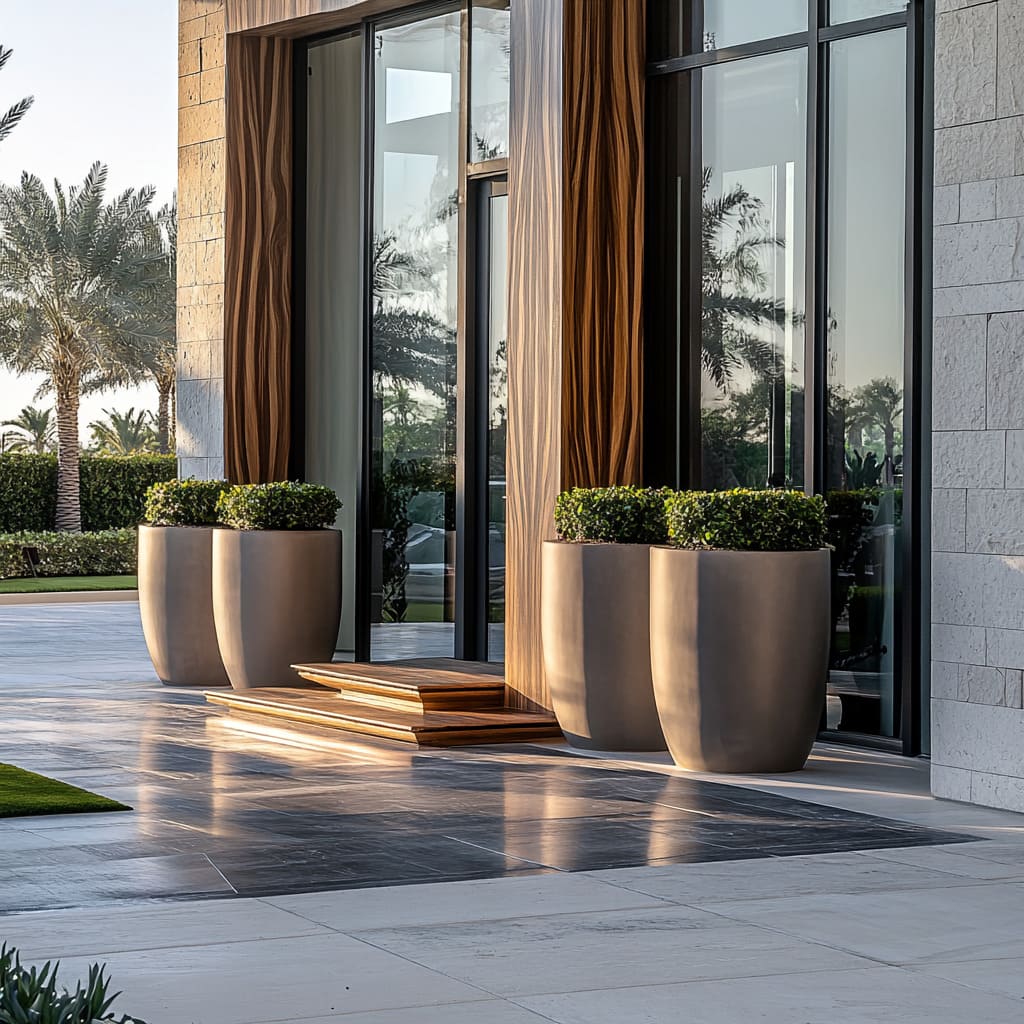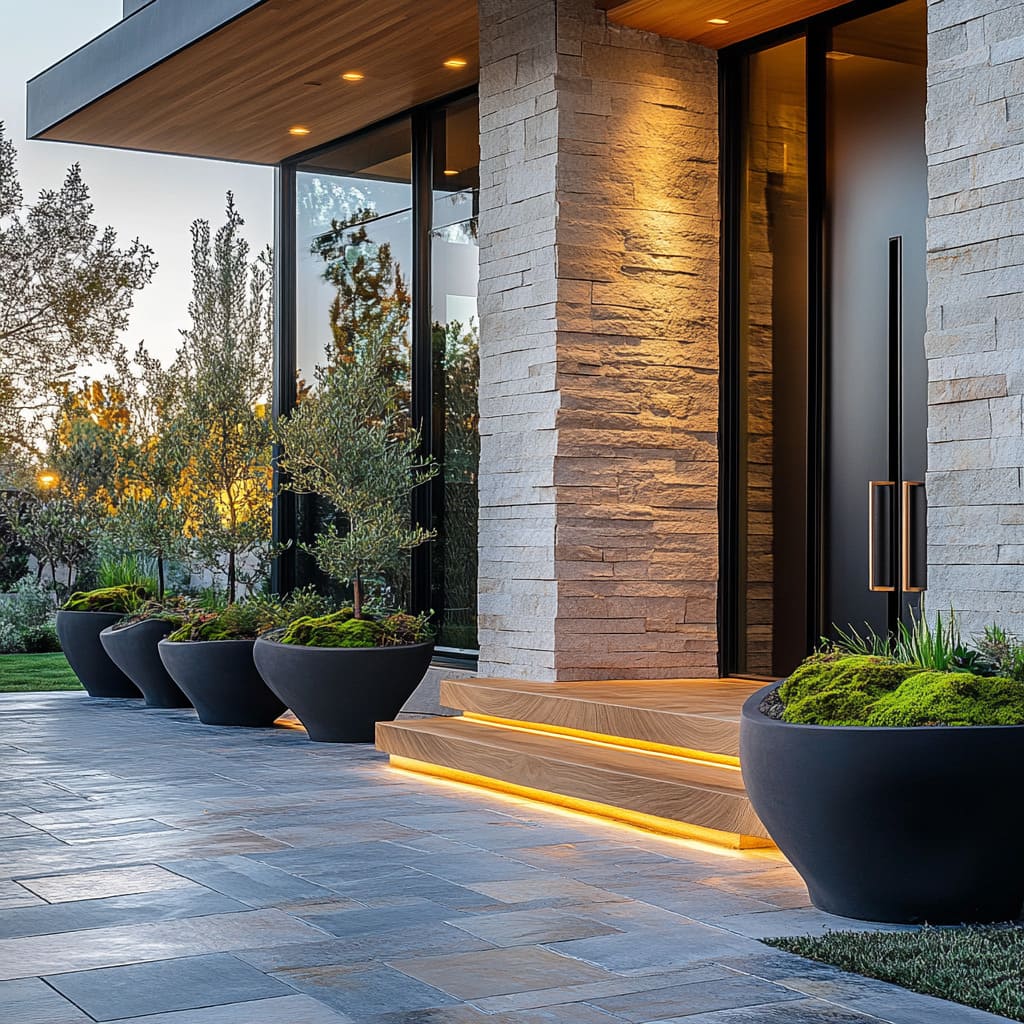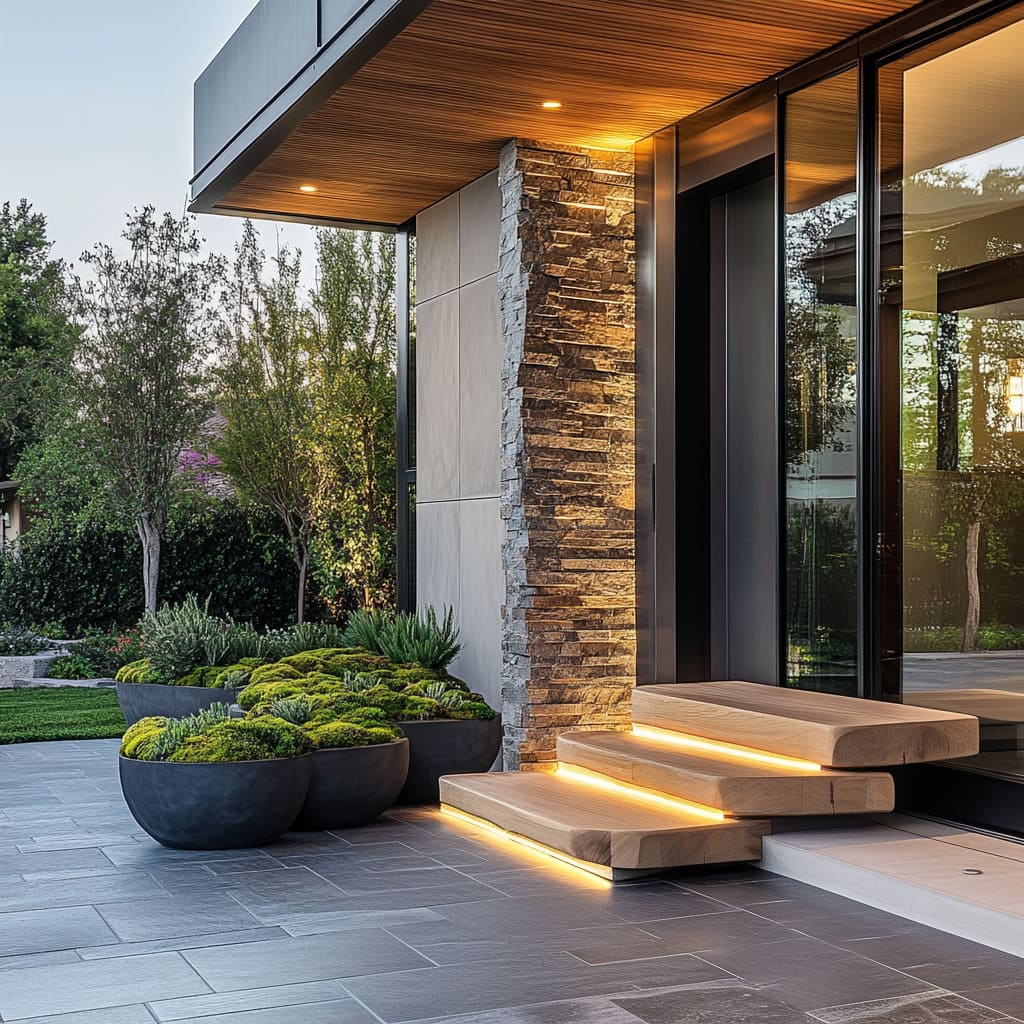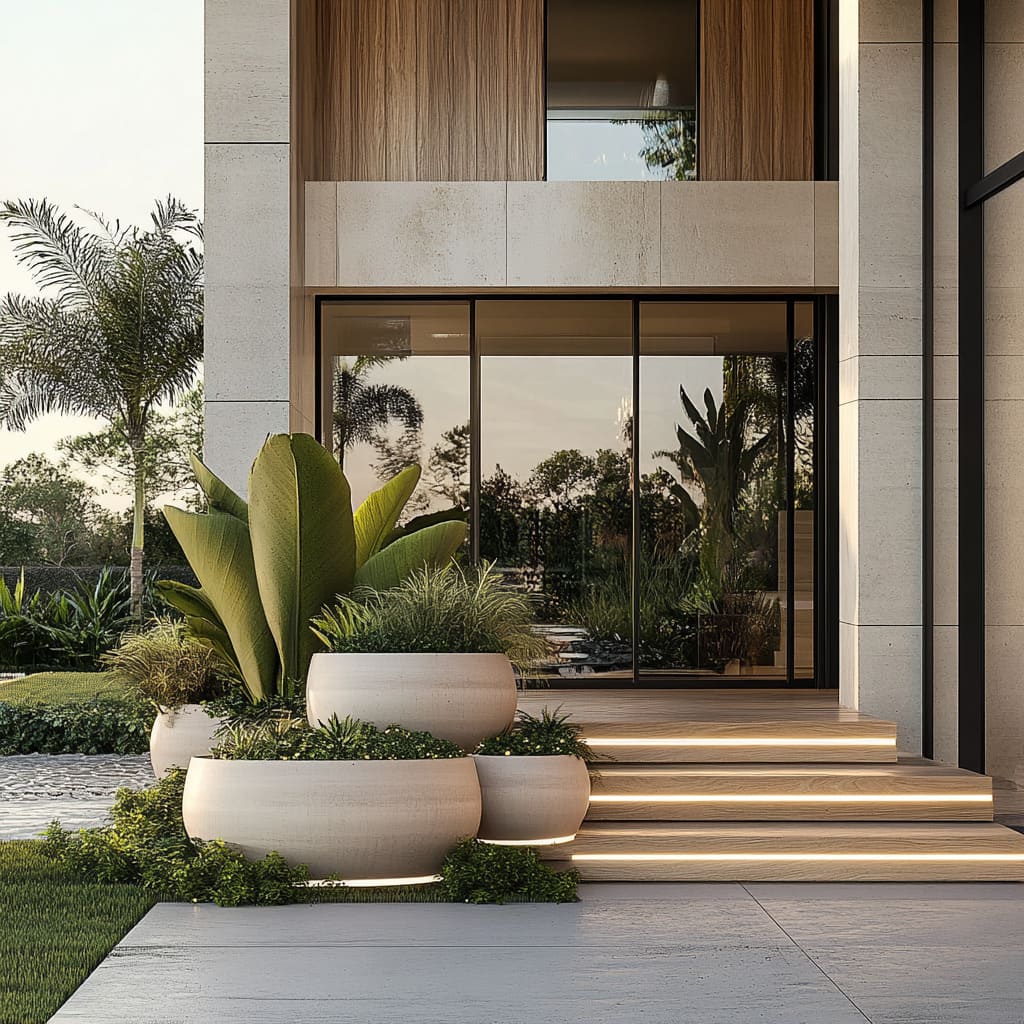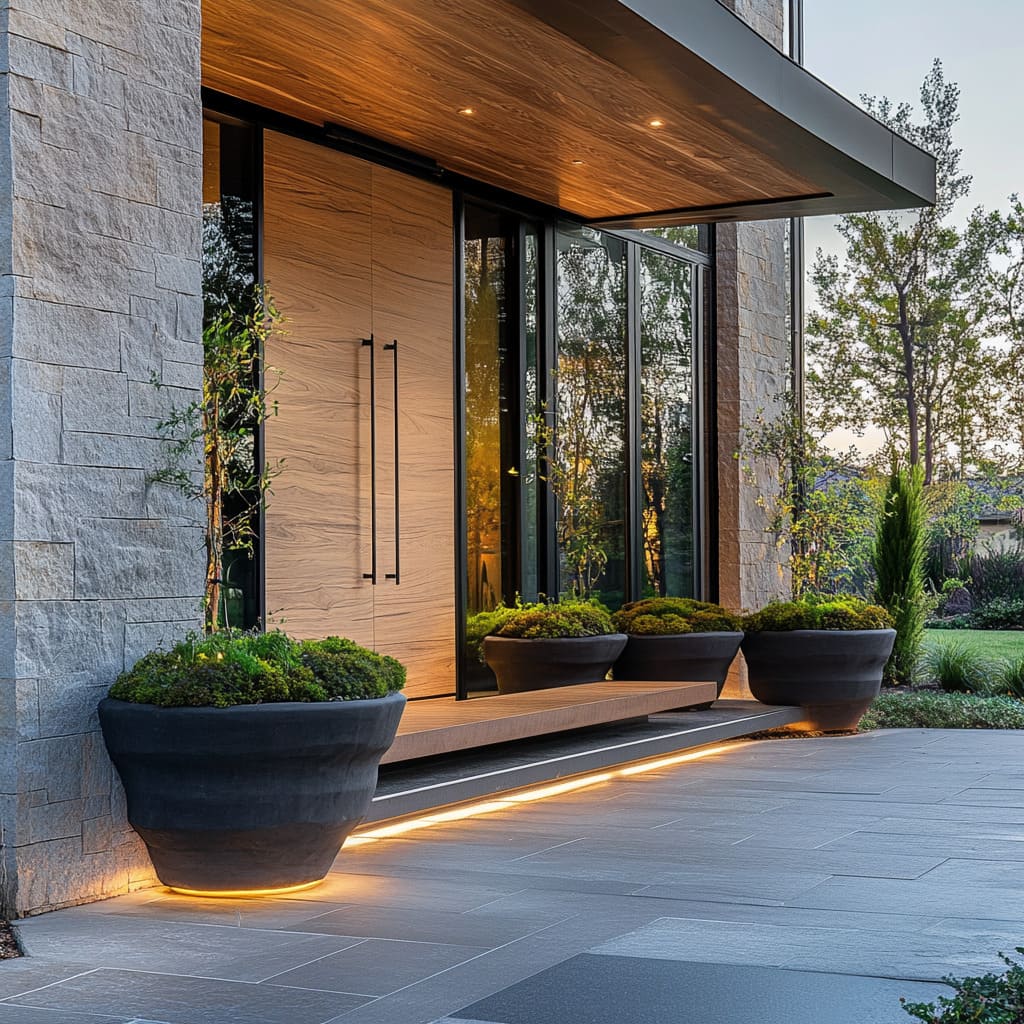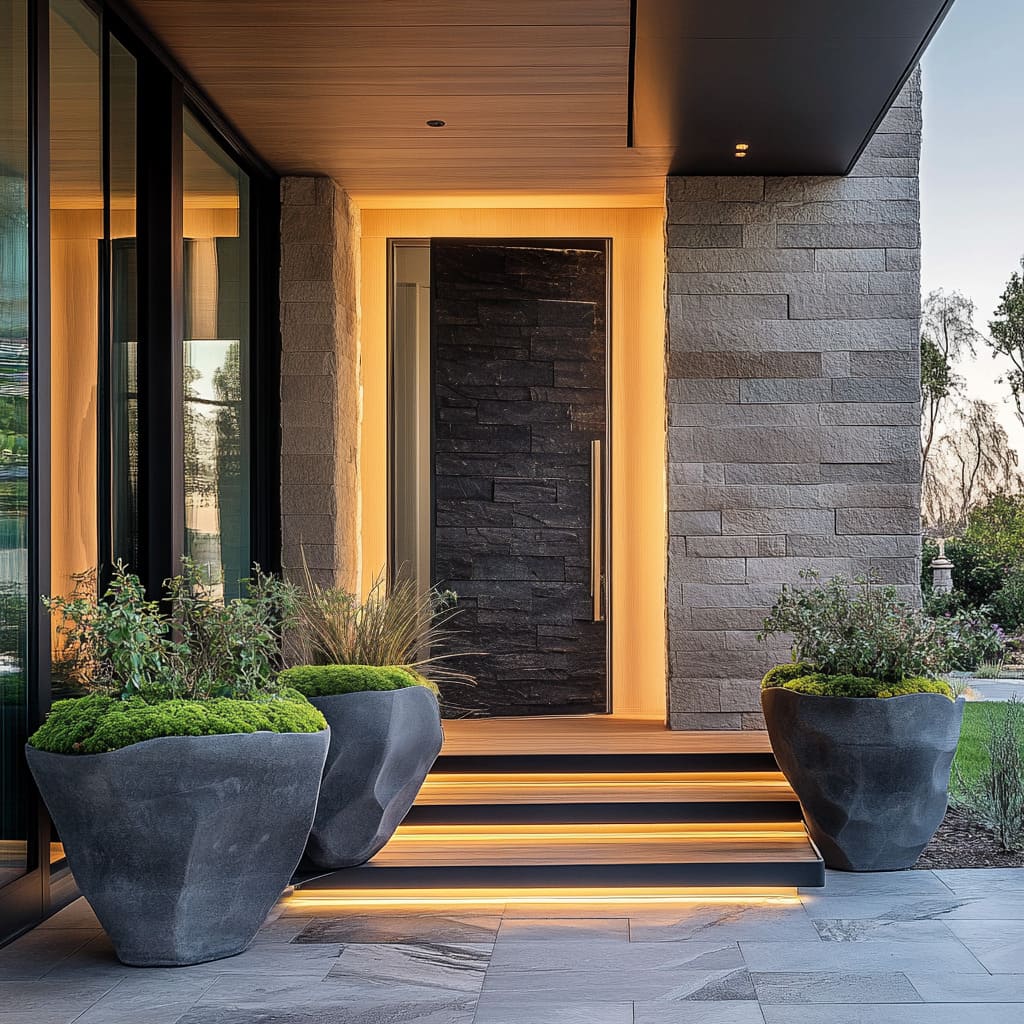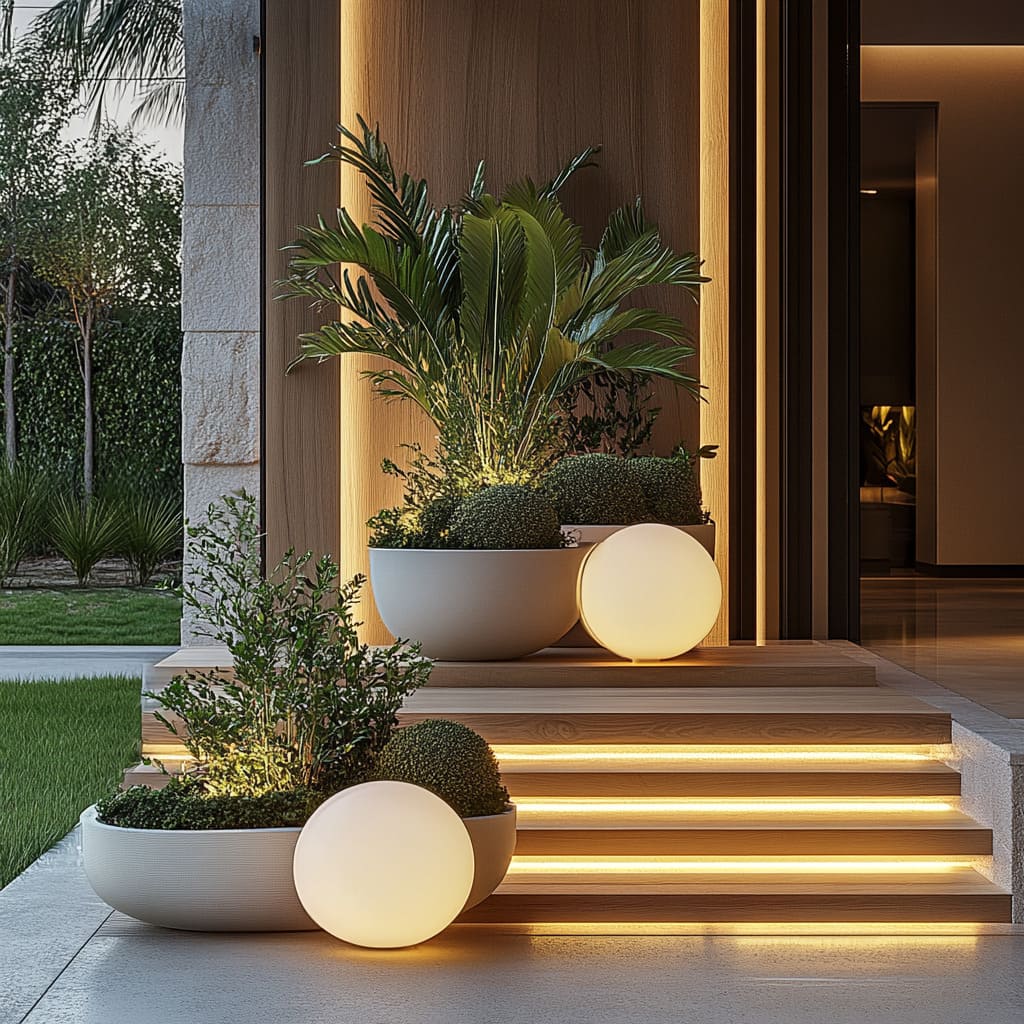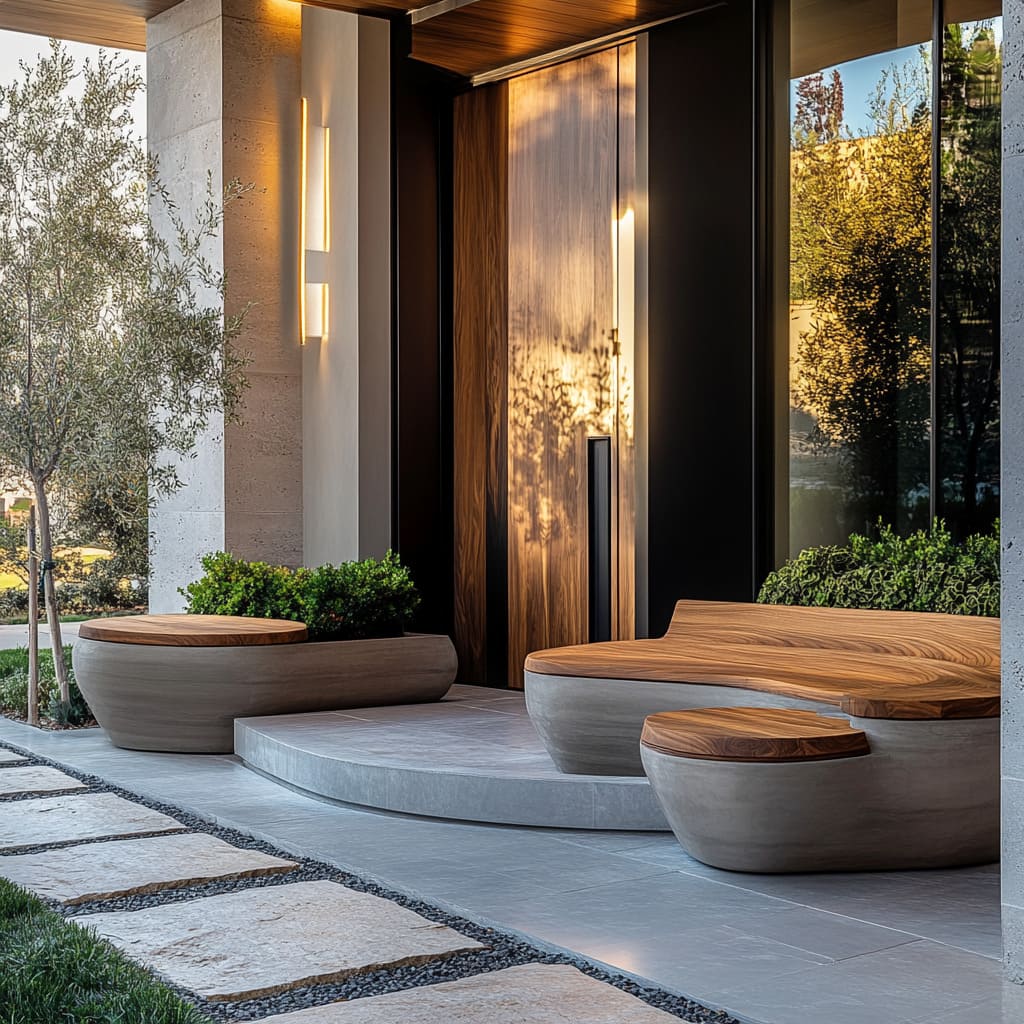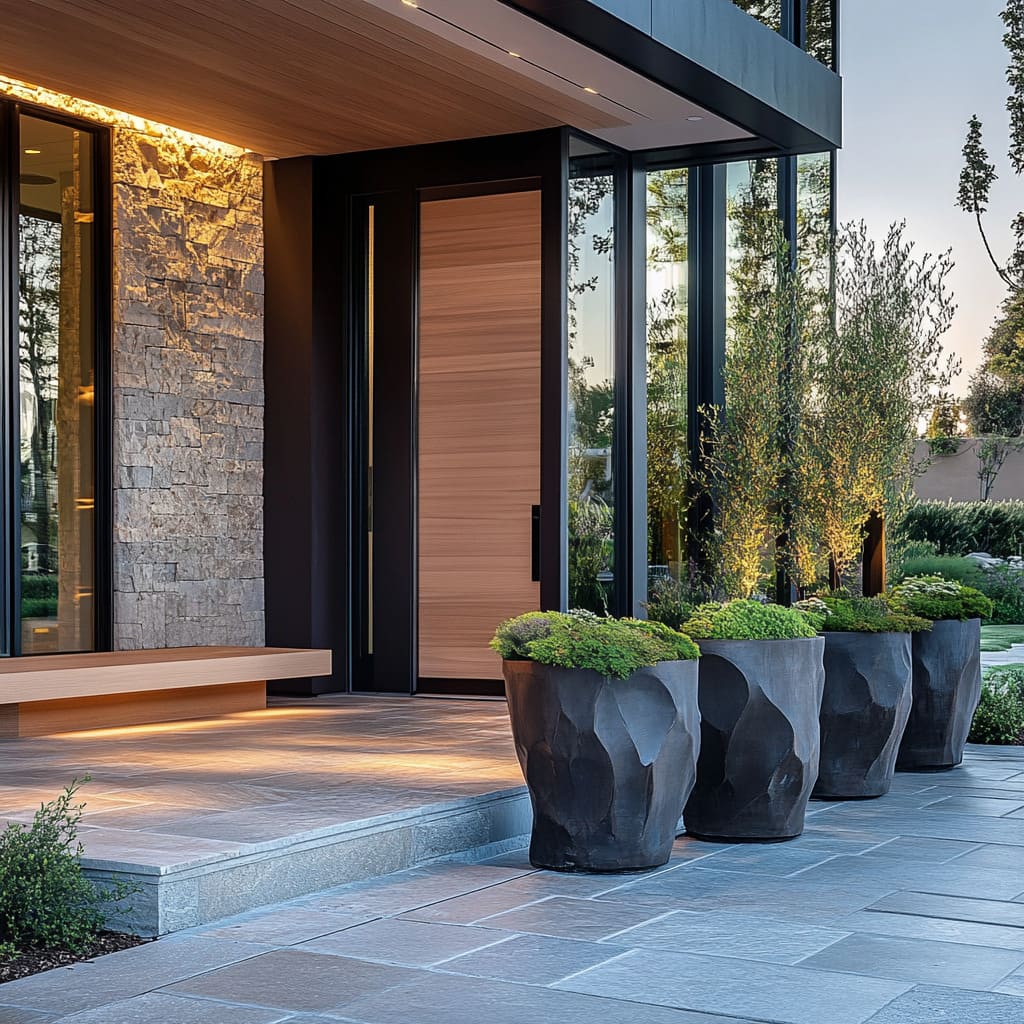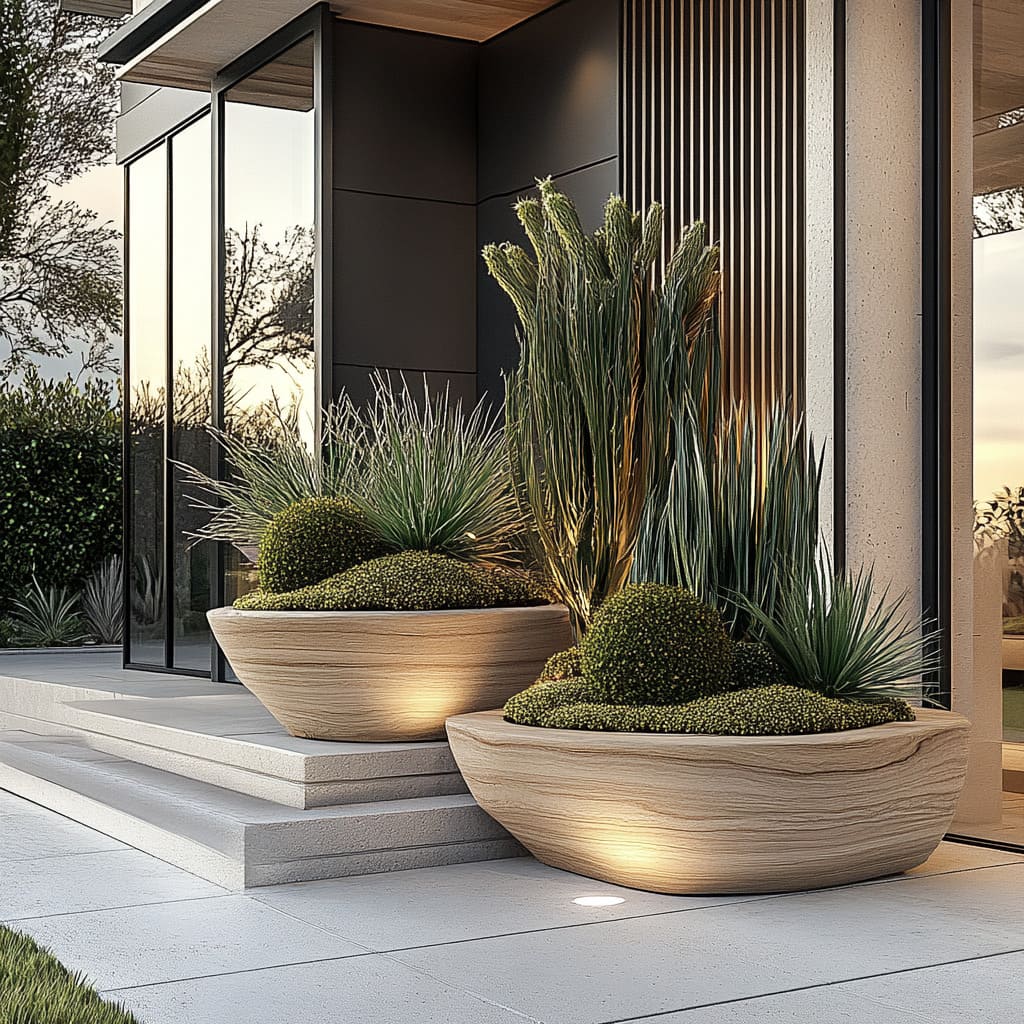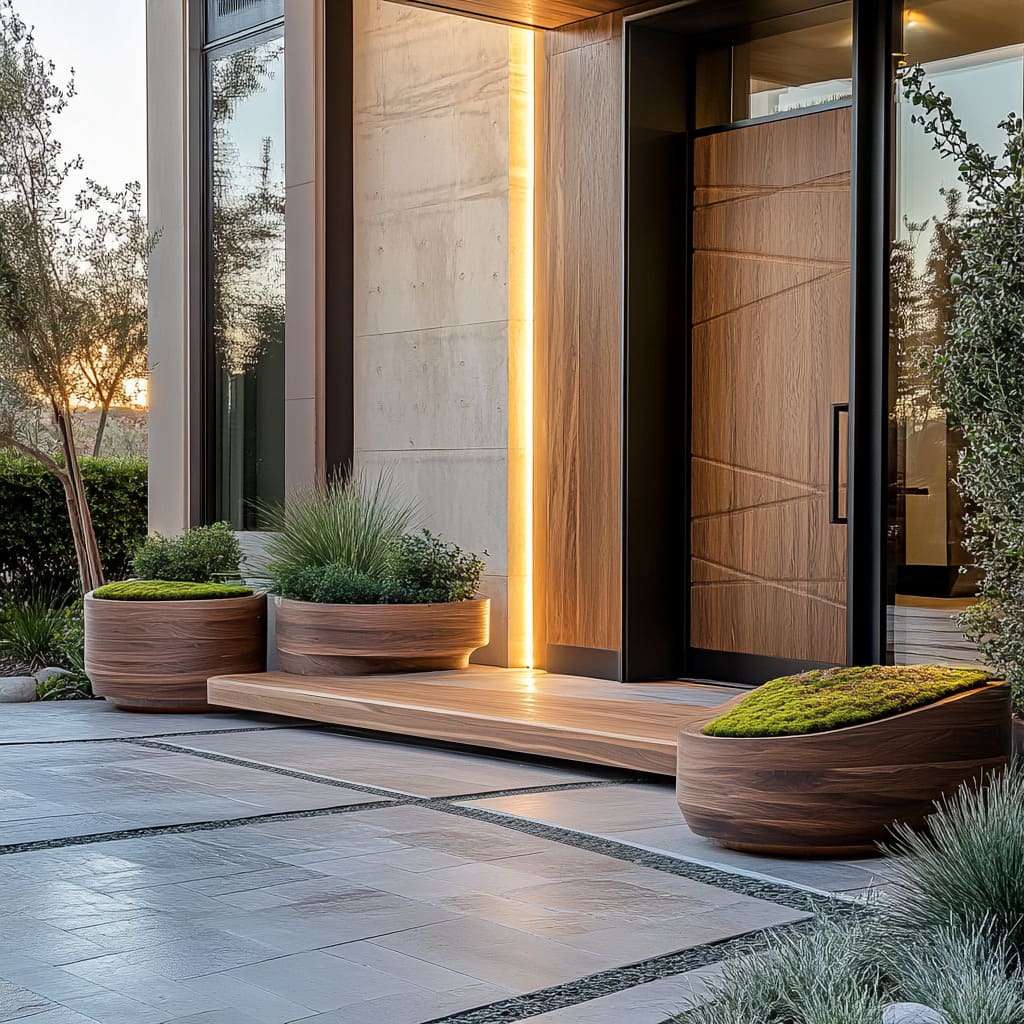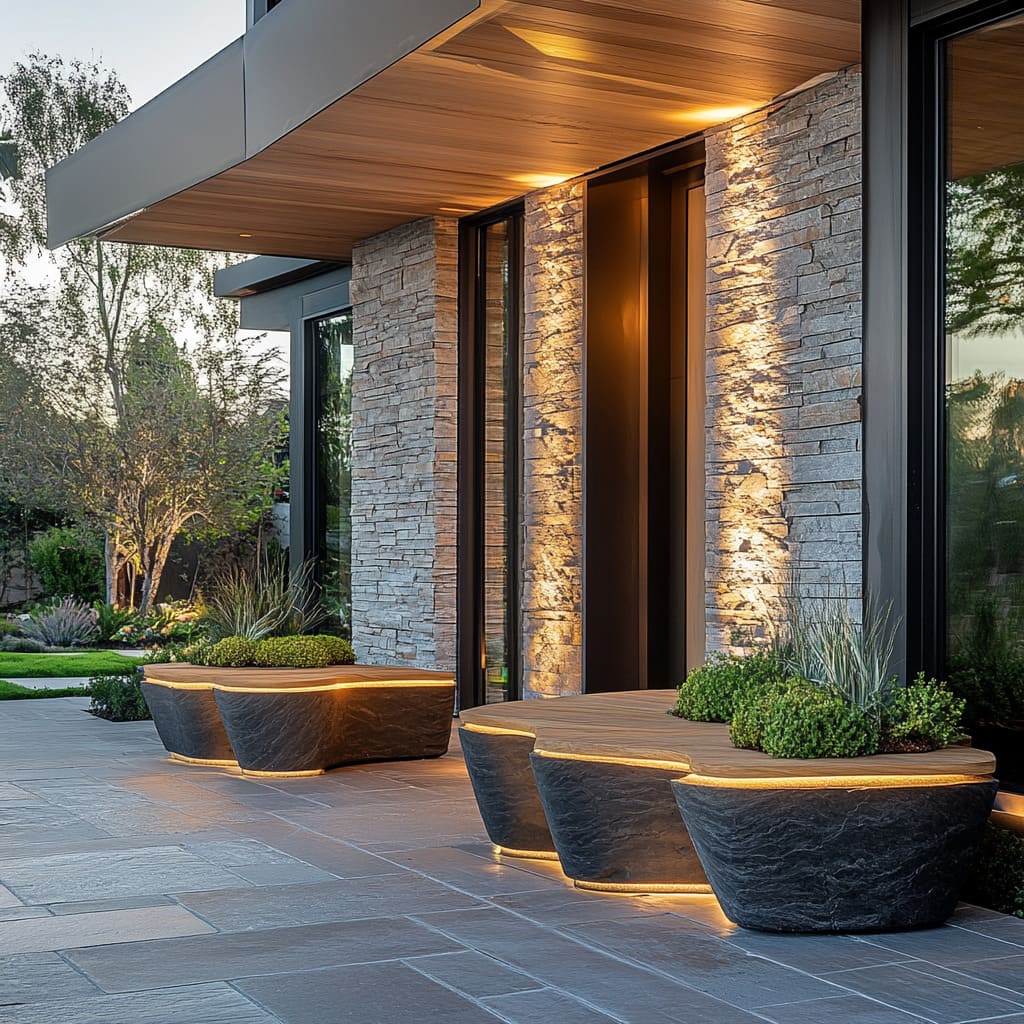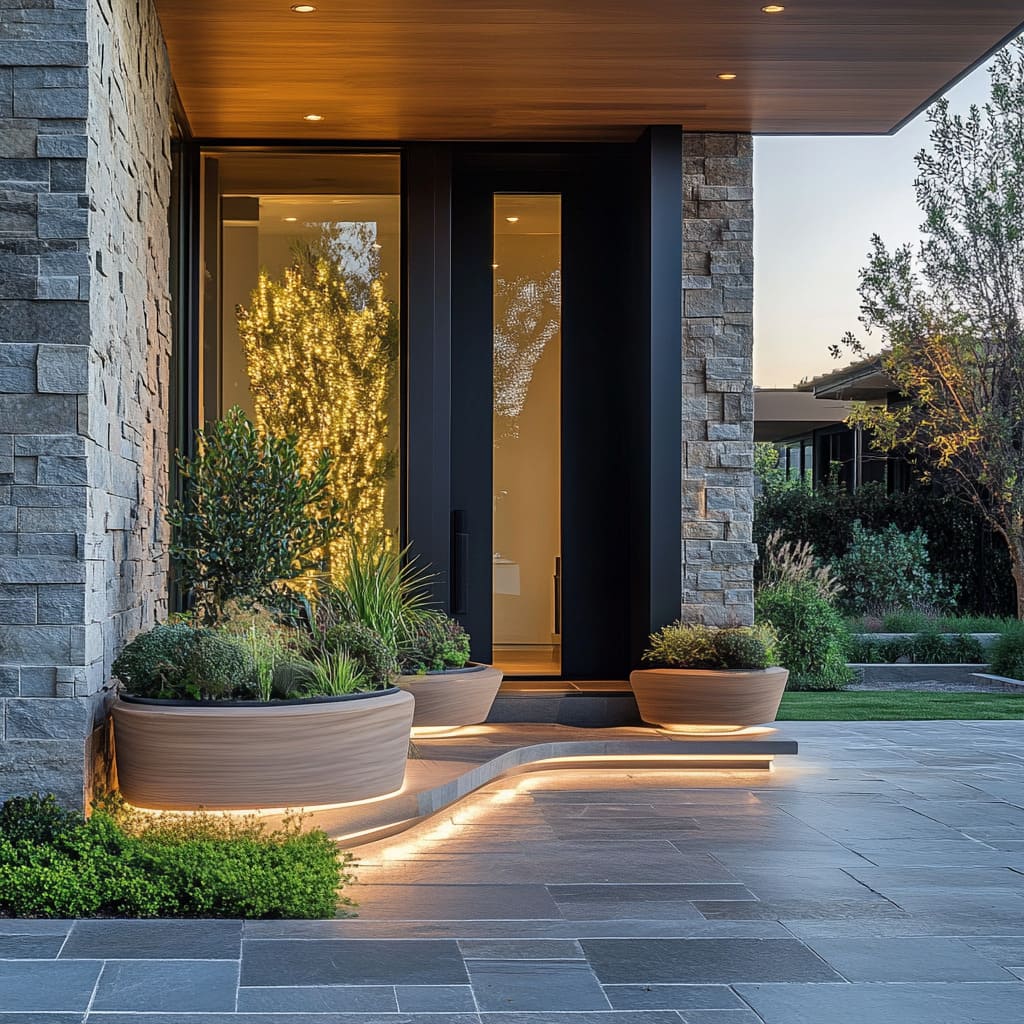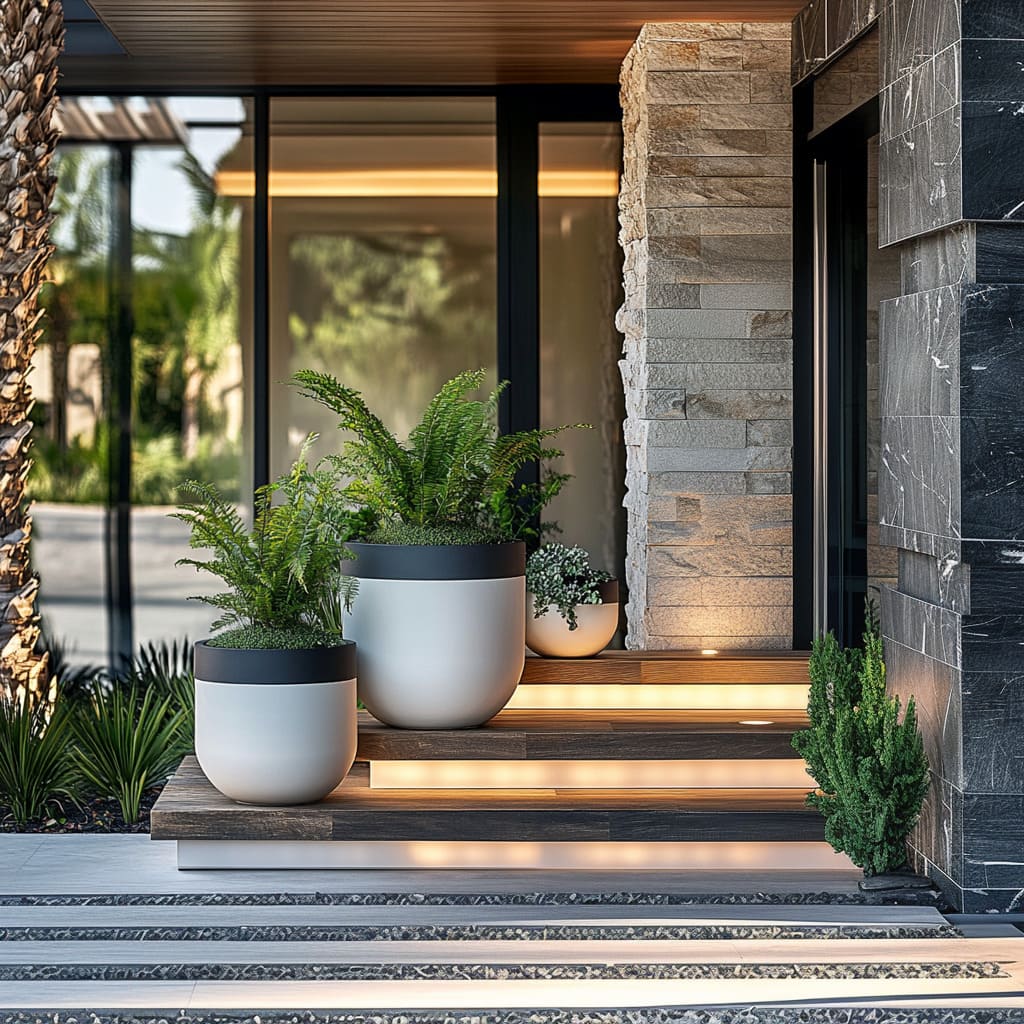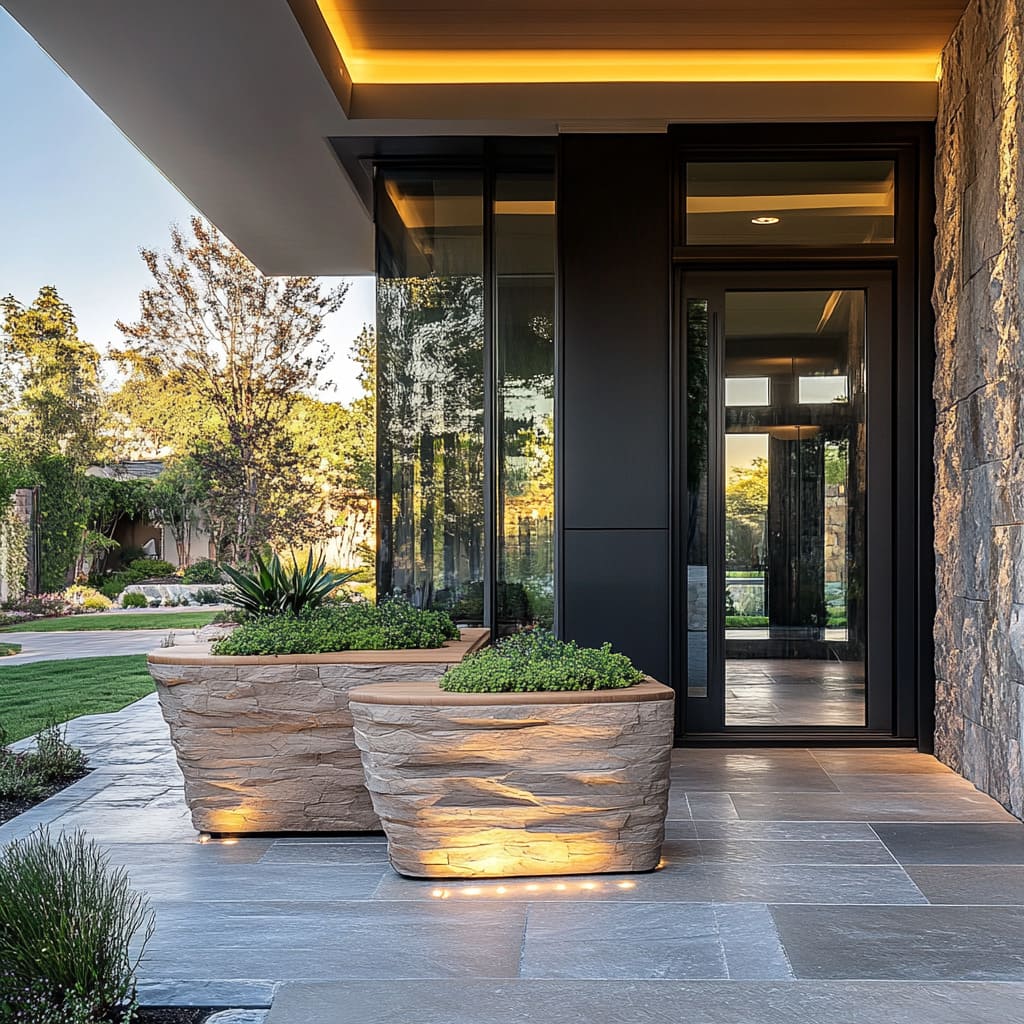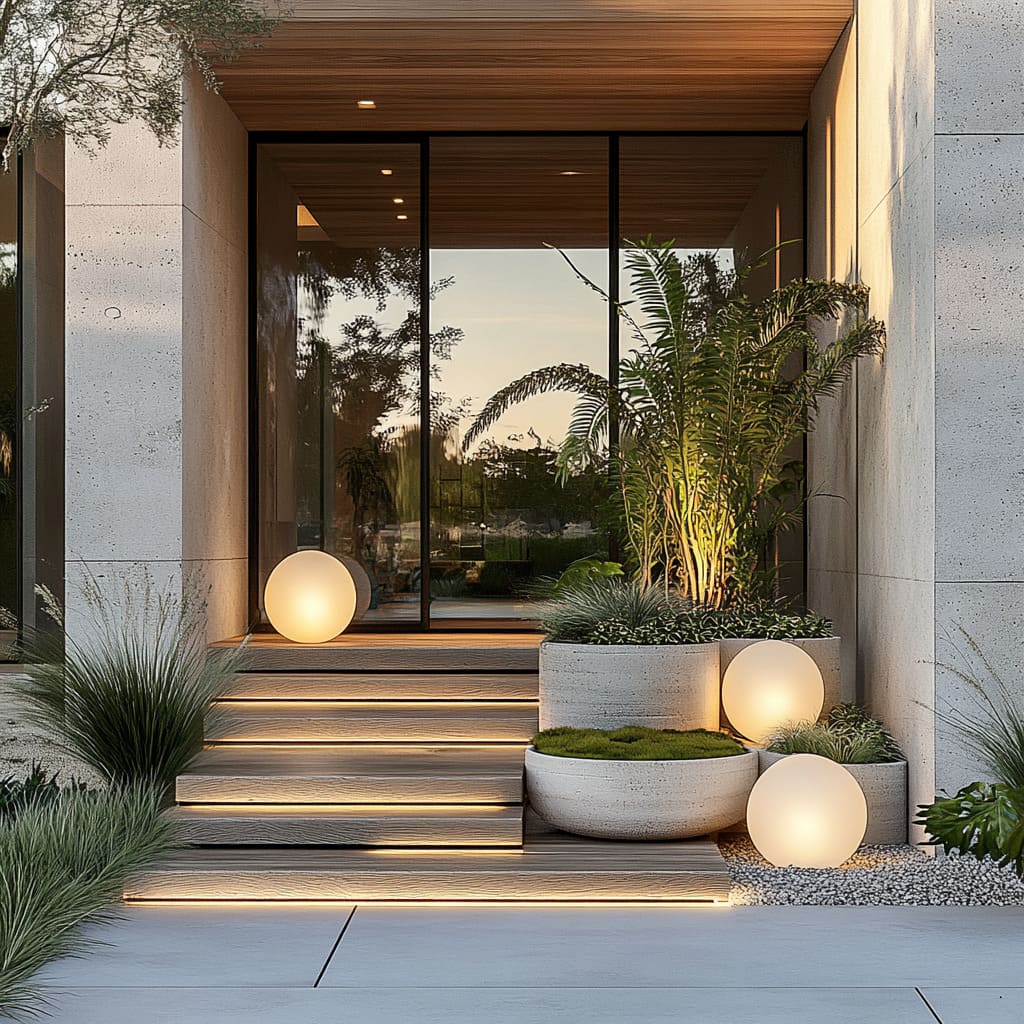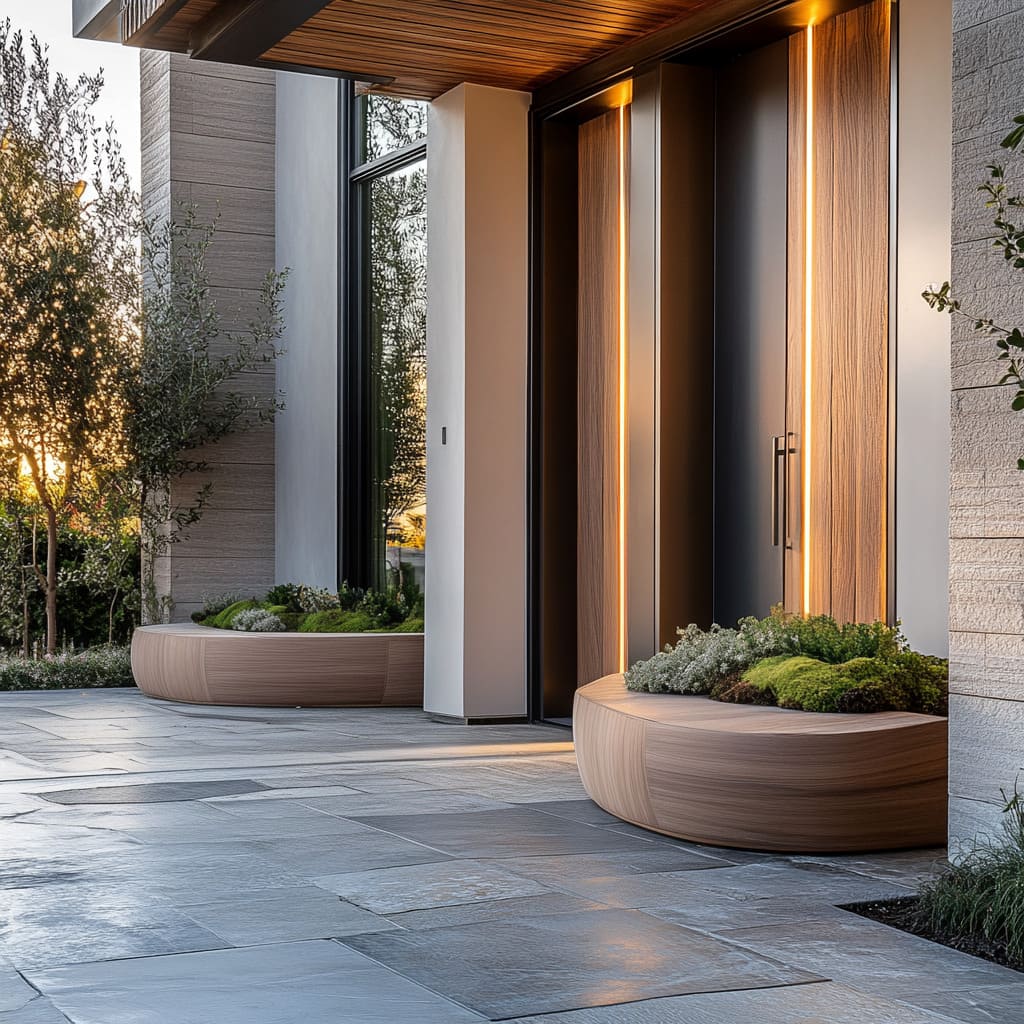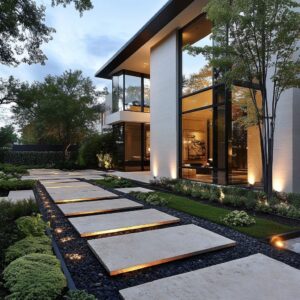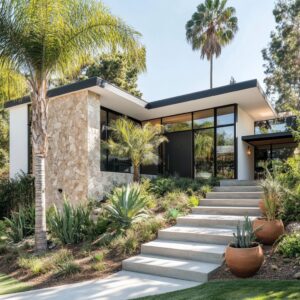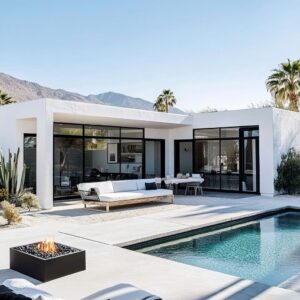The front porch has become a focal point of modern home design, blending bold aesthetics with practical functionality. It’s no longer just a waiting area but a carefully crafted outdoor space that reflects the personality and style of the entire home.
From sculptural planters to integrated lighting, the right design choices transform porches into spaces that are both visually impactful and welcoming. This article explores key trends, commonalities, specific design elements, and non-trivial design patterns across modern front porches.
It focuses on how these elements integrate to create polished, high-end looks that feel intentional and contemporary. Whether through the use of natural materials, geometric lines, or carefully layered greenery, each design brings something new to the table.
For anyone seeking modern front porch ideas, it’s clear that lighting, texture, and minimal landscaping play significant roles. The use of warm-toned wood, oversized planters, and sleek glass doors creates a timeless yet trendy entryway.
Meanwhile, thoughtful details—like recessed lighting along steps or curated plants with low maintenance needs—strike a balance between luxury and usability. From urban-inspired simplicity to warm, textured designs seen in suburban homes, modern porch spaces are all about creating the right first impression.
Each element, no matter how subtle, works together to elevate the home’s style while making the outdoor entry functional for daily use. Let’s take a closer look at what makes these spaces shine.
Trends in Front Porch Design
Modern front porch designs use themes that reflect both aesthetic and functional priorities. These spaces blend visual impact with real-world usability, ensuring they look as beautiful as they are practical.
The combination of materials, clean lines, and thoughtful elements defines the contemporary front porch design trend.
Materials and Finishes
Natural Stone Dominance: Stone remains a cornerstone of modern porch design, both literally and visually. Stacked stone cladding is frequently seen on façades, planters, and low retaining walls, offering texture and visual depth.
Its durability and timeless appeal make it a go-to choice for homeowners aiming to blend natural and modern aesthetics. The subtle variations in stone colors—ranging from soft grays to earthy tones—add dimension without overwhelming the design.
Wood Accents: Warm-toned wood consistently complements stone’s cool surfaces, softening the overall look. It’s used on ceilings, wide entry steps, and pivot doors to add an organic touch.
Wood contrasts beautifully with darker finishes like matte black metal and polished glass, creating a perfect mix of warmth and sleekness. In some cases, wood extends indoors through seamless transitions, further emphasizing the connection between interior and exterior spaces.
Glass Integration: One of the defining features of a contemporary front porch design is the extensive use of glass. Floor-to-ceiling panels, framed with thin black metal or left frameless, flood interiors with natural light while maintaining a clean, minimalist façade.
Glass enhances openness, visually expanding the porch and creating a harmonious flow between outdoor and indoor living areas. It’s often paired with sliding or pivot glass doors for a cohesive, modern aesthetic.
Metal Accents: Subtle touches of metal complete the modern look, emphasizing sharp, clean lines. Black metal frames are commonly used for windows, door hardware, and railing details.
Planters, too, often incorporate metal finishes—either as thin edging or as part of their sculptural forms. This sleek material ties together the stone, glass, and wood elements, reinforcing the porch’s structured yet welcoming feel.
Through the thoughtful use of stone, wood, glass, and metal, modern porches achieve a balance of sophistication and functionality. Each material plays a key role in defining the space, blending organic and industrial elements seamlessly.
Whether it’s the texture of stacked stone or the transparency of glass panels, these trends reflect a deliberate approach to creating spaces that feel both contemporary and timeless.
Lighting
Thoughtful lighting plays a key role in modern front porch designs, combining style and function to create striking, usable spaces at all hours. Whether it’s a minimal design or one with sculptural planters and textured stone, lighting choices bring out every detail while adding warmth and ambiance.
Integrated LED Strips: LED lighting is a staple feature in today’s porch designs. These slim, energy-efficient strips are seamlessly incorporated into stair edges, beneath planters, or along ceiling lines.
This technique adds a soft, ambient glow and highlights the architectural features, giving steps or benches a subtle “floating” effect. When placed carefully, the lights guide visitors up the entry path while creating a polished and intentional look.
LED integration has become a must-have in modern spaces due to its versatility and clean aesthetic. Warm Light Temperature: Unlike harsh white lights, modern porch designs favor warm-toned lighting, which softens the overall appearance and brings coziness to minimalistic structures.
It’s particularly effective in spaces dominated by natural materials like wood and stone, enhancing their textures and adding a welcoming glow to entryways. From planters to recessed fixtures, this choice ensures that even the most angular designs feel inviting in the evening.
Spotlighting Planters and Façades: Modern porches make full use of spotlighting to emphasize key features. Planters filled with lush greenery or sculptural shapes become focal points when lit from below, casting elegant shadows and adding dimension.
Similarly, textured façades, such as stacked stone or architectural panels, are accentuated with directed lighting. This adds layers of depth to the porch while creating dramatic visual interest after sunset.
Incorporating modern front door lighting ideas into these spaces transforms them into eye-catching, functional outdoor extensions. Whether through integrated LEDs or focused spotlights, lighting enhances every element, from planters to steps, while boosting both safety and style.
It’s a small detail that leaves a big impression, ensuring the porch is as stunning at night as it is during the day.
Planters
Planters have taken on a sculptural role in modern front porch design, acting as statement pieces that tie the entire aesthetic together. These elements are far more than containers for greenery—they balance proportions, introduce texture, and complement the overall architectural style of the home.
Sculptural Planters: Planters are designed to stand out with bold forms that draw attention and anchor the space visually. From sharply angular stone structures to soft, curved bowl-shaped designs, the variety of shapes adds personality to the porch.
These sculptural forms are often clustered in groups for added visual impact, creating dynamic focal points while maintaining a clean, intentional layout. Two-Tone Planters: A growing trend in contemporary design is the use of two-tone planters.
Whether it’s a mix of black and white ceramic, matte concrete paired with natural wood textures, or bold color-blocking finishes, these planters offer a modern twist on traditional containers. The dual finishes add contrast and complement other porch materials, such as wood and glass, for a cohesive yet visually interesting design.
Oversized Proportions: Large planters are a defining feature of modern porches, particularly for homes with expansive entryways. Their oversized scale not only balances the proportions of a spacious porch but also emphasizes greenery as a primary design element.
These statement planters help define the space, ensuring that even minimalist porches feel rich and complete.
Greenery
Greenery is the lifeblood of front porch design, introducing natural texture, movement, and a calming vibe. While plant choices are often tailored for style, practicality remains equally important, ensuring a lush yet manageable outdoor entry.
Low-Maintenance Choices: For a clean and fuss-free aesthetic, modern designs often prioritize drought-tolerant plants like moss, ornamental grasses, succulents, and compact shrubs. These choices offer a sculptural quality without requiring constant attention, making them ideal for low-maintenance front porch landscaping.
Such greenery also thrives in a variety of climates, providing long-lasting beauty while maintaining the porch’s sleek, polished appearance. Layered Arrangements: Greenery is thoughtfully arranged to create depth and visual interest.
Taller plants such as palms, olive trees, or small bamboo varieties provide vertical structure, while soft ground cover like moss or creeping greenery fills out the base. This layering effect gives the plants a natural, curated look, ensuring that every planter feels full and lively.
Tropical Influences: The use of broad-leafed plants, such as palms or bird-of-paradise, brings a hint of tropical flair to contemporary porches. These plants lend a relaxed yet refined touch, softening the harder edges of modern materials like stone or metal.
Their lush greenery contrasts beautifully with minimalist surroundings, creating an effortless balance between sophistication and warmth. With the right combination of sculptural planters and carefully selected greenery, modern front porches become vibrant, welcoming spaces.
The interplay between bold shapes and lush plant life ensures a design that is both functional and visually captivating.
Seating Design
Modern front porch designs emphasize seating that feels intentional, functional, and visually seamless. Whether it’s built into planters or carefully crafted to blend into the surroundings, seating serves as both a practical and aesthetic feature.
Integrated Seating with Planters: A standout trend in contemporary porches is the integration of seating with planters. Benches are often designed to flow directly from oversized planters, making them appear as natural extensions of the overall architecture.
This combination brings a sense of harmony to the porch, where greenery and seating coexist effortlessly. By using the same materials—such as natural stone or wood—these benches create a visually cohesive look while maximizing functionality.
It’s a clever way to include seating without interrupting the clean, modern layout. Sleek Minimalism: When standalone seating is included, it reflects the principles of modern design: simple, unadorned, and refined.
A garden modern bench made from solid wood, smooth stone, or polished concrete often complements the other materials on the porch. These benches rely on clean lines and subtle curves, ensuring they add to the design without overpowering it.
Placement is key, too—benches are often set against walls or tucked alongside planters to maintain the sense of openness and flow. Seating designs in modern porches show a clear preference for subtlety and function.
They’re not just places to sit—they become integral parts of the design, connecting people to nature while maintaining the sleek, polished look of the space. Whether integrated with planters or standing alone, the focus remains on creating comfort without sacrificing the clean, minimal aesthetic.
Distinctive Design Features For a Bold Look
Modern contemporary front porch designs are defined by standout features that strike the perfect balance between bold statements and refined minimalism. From visual illusions to thoughtful material combinations, these patterns and elements set the tone for a sleek and dynamic entrance.
Floating Elements
One of the most striking motifs in modern porches is the illusion of “floating” structures, particularly in steps and planters. This effect is achieved using recessed LED lighting placed strategically beneath stairs or along the edges of planters, as well as hidden structural supports that lift surfaces off the ground.
The result is a visually weightless look that feels contemporary and dynamic. The soft glow of lighting not only adds functionality but also emphasizes the clean lines of the architecture, making steps or planter bases appear suspended in mid-air.
Contrast Between Rough and Smooth Textures
Texture plays a major role in creating interest while maintaining a cohesive design. A clear trend is the contrast between rugged stacked stone and sleek surfaces like smooth wood, glass panels, or matte metal.
For example, rough stone façades often provide a textured backdrop for clean wooden doors or polished glass windows. This pairing enhances visual depth, creating a tactile and aesthetic experience that feels modern yet grounded.
By alternating these finishes, designers achieve a balance that softens industrial materials while maintaining a bold, refined appearance.
Geometric Precision
Modern porch designs embrace strong geometric forms to enhance structure and symmetry. This pattern emerges in a variety of elements—planters shaped into clean-lined cubes, steps crafted into angular layers, or sleek door panels with linear detailing.
Repetition of these geometric shapes throughout the space creates visual harmony, ensuring every piece feels intentional. Whether the design leans toward subtle rectangles or bold angular patterns, geometry reinforces the overall modern aesthetic.
Symmetry vs. Asymmetry
While symmetry continues to dominate many designs—using balanced planters, evenly spaced steps, and matching lighting—there’s an increasing shift toward asymmetrical layouts. Off-centered planters, staggered steps, and slightly varied arrangements of greenery bring an organic, dynamic energy to the porch.
This approach avoids rigidity, adding visual flow while maintaining the clean, contemporary lines that define the style. Asymmetry works particularly well in larger spaces, where varied placement creates a sense of natural movement without overwhelming the structure.
Facade Integration
A defining feature of modern contemporary front porch designs is the seamless integration of porch materials with the house façade. Wood ceilings, stone cladding, and glass panels used on the porch are often extended onto walls, doors, or structural beams.
This thoughtful repetition of materials ensures the porch feels like a natural extension of the home rather than a separate entity. By carrying finishes through to adjoining spaces, the overall look is unified, polished, and architecturally cohesive.
These standout features reflect a careful blend of structure, creativity, and precision. By incorporating floating elements, textural contrasts, geometric patterns, and seamless material transitions, modern front porches achieve a bold yet inviting entrance that perfectly complements today’s architectural styles.
Advanced Design Patterns Driving Modern Porch Styles
Modern front porch designs are evolving into dynamic, intentional spaces where every feature serves a dual purpose, merging function with bold aesthetics. These designs aren’t just about style—they reflect a deeper integration of architecture, lighting, and landscaping.
Below are standout patterns and insights that redefine contemporary front entrance ideas.
Lighting as a Central Element
Lighting is no longer just an accessory but a key component of the design narrative. From recessed LEDs under stair treads to planter uplights and spotlights illuminating textured stone façades, lighting creates layers of depth and drama.
This technique highlights elements like rough stone surfaces or clean geometric forms that might otherwise blend into the background. By using lighting as a sculptural tool, modern house porch design gains a sense of movement and intentionality, especially during evening hours when these effects come alive.
Planters as Architectural Anchors
In many modern porches, planters act as structural anchors. These oversized, sculptural containers are as significant to the architecture as the steps or façade.
Crafted from materials like stone, ceramic, or metal, they introduce visual weight, grounding the design against the lighter features of open spaces or glass panels. Their scale ensures greenery is showcased prominently, reinforcing the porch’s connection to nature while maintaining a striking, architectural presence.
Material Continuity
One of the most compelling strategies in these designs is the continuity of materials. For example, a warm-toned wood ceiling might extend seamlessly to frame the entrance door or even flow down to the steps.
Similarly, stone cladding often spans from the house façade to the bases of planters, creating a unified look. This approach transforms the porch into a cohesive extension of the home, where no element feels out of place.
It’s a defining aspect of modern design, ensuring visual harmony across all surfaces.
Blurring Indoor and Outdoor Spaces
Through the extensive use of floor-to-ceiling glass, frameless doors, and consistent material palettes, modern porches blur the boundaries between interior and exterior. The porch becomes an outdoor room, seamlessly connected to indoor spaces.
This design choice not only elevates the aesthetic but also reinforces the porch’s role as an extension of the living area. It’s an approach that works beautifully in climates that favor indoor-outdoor living, showcasing how transitional spaces can be functional and visually striking.
Contrast as a Defining Tool
Modern porches lean heavily on contrast to create visual sharpness. Light-colored stone juxtaposed with black-framed glass, or the warmth of wood against the cool gray of concrete tiles, emphasizes the clean, contemporary lines.
These high-contrast pairings highlight the geometry of the space, making each feature stand out while maintaining a sense of balance. This deliberate use of contrast ensures the porch feels crisp and modern without becoming overly stark.
Tropical Influences Meet Minimalism
While the overall style prioritizes minimalism, the plant selections often bring a touch of tropical flair. Lush palms, bird-of-paradise plants, or other broad-leaf greenery soften the clean lines of the architecture, adding warmth and approachability.
This blend of minimalism with tropical touches creates a porch that feels both sophisticated and inviting. The greenery not only complements the materials but also brings a sense of vibrancy to the design.
Modern front porch designs reflect a thoughtful synthesis of materials, greenery, and lighting, each element reinforcing the others to create a unified and compelling entrance. By integrating bold contrasts, architectural planters, and seamless material transitions, these porches set a new standard for contemporary front entrance ideas that balance sophistication with functionality.
How These Elements Work Together
Modern porch designs are a masterclass in balance, seamlessly integrating bold features, thoughtful textures, and functional elements to create spaces that are both stunning and practical. These porches go beyond aesthetics, proving how materials, greenery, and lighting can combine to create a harmonious and inviting entrance.
Architectural Balance
Modern porch ideas thrive on balance, using bold, oversized elements like large planters, wide steps, and expansive surfaces to ground the design. These substantial features create a sense of permanence, ensuring the porch feels intentional and substantial.
At the same time, these heavier components are offset by visually lighter elements such as floating steps, glass panels, or recessed lighting. This contrast between bold forms and weightless touches gives the design depth, making it feel both solid and dynamic.
The Interplay of Warmth and Coolness
The contrast between warm and cool materials is another critical aspect of how these porches come together. Warm woods and soft, amber-toned lighting provide a welcoming counterbalance to the cooler hues of stone, concrete, or metal.
This interplay ensures that the minimalist aesthetic never feels sterile or uninviting. Instead, it creates a cozy yet contemporary feel that draws people in, making the porch not only visually appealing but also emotionally engaging.
Greenery as a Functional Feature
Plants play a pivotal role in softening the sharp lines and hard surfaces typical of modern designs. Greenery is not just decorative but an integral part of the porch’s structure, introducing texture, color, and life.
The careful layering of tall plants, cascading greenery, and mossy ground cover mirrors the thoughtful layering of materials like wood, stone, and glass. This integration connects the porch to its surroundings, ensuring it feels like an organic extension of the landscape rather than a detached architectural element.
Lighting’s Dual Role
Lighting is both an aesthetic and practical component of these designs. By strategically placing lighting beneath steps, within planters, or along walls, designers sculpt the space with light, adding visual drama while ensuring safety and usability.
At night, these porches take on a new character as textures, shapes, and materials are illuminated. Lighting highlights key features like textured stone façades or sculptural planters, ensuring that every detail is visible and impactful, even in low light.
These elements—architectural balance, the contrast of materials, greenery, and lighting—come together to create modern porch ideas that are equal parts beautiful and functional. By focusing on cohesion and contrast, these designs ensure that the porch serves as a striking yet inviting prelude to the home.
Every detail, from the warmth of wood to the soft glow of lighting, works together to create a lasting impression.
Emerging Trends and Ideas
Modern porch designs continue to evolve, combining aesthetics with function in new and exciting ways. These emerging trends highlight a shift toward personalized, sustainable, and multi-functional spaces that reflect a homeowner’s style and practical needs.
Integration of Seating and Planters
One of the most innovative trends is the seamless fusion of seating and planters, a concept that prioritizes both beauty and utility. The inclusion of integrated seating, like a sleek modern front porch bench that doubles as a planter base, allows for a cohesive and functional design.
These benches blend into the architectural elements of the porch, creating a natural flow between greenery and usable space. Looking ahead, modular designs could take this idea further, offering customizable seating-planter combinations that adapt to different porch layouts and styles.
Evolving Asymmetry
While symmetry has traditionally dominated porch layouts, asymmetry is gaining ground as a way to introduce movement and visual interest. Offset planters, staggered steps, and seating placed at unexpected angles create a dynamic composition that feels organic yet intentional.
Future designs might explore more irregular shapes and layouts, blending geometric precision with softer, flowing elements. This approach can add personality to porches, particularly in larger spaces where asymmetry feels less disruptive and more artistic.
Sustainable Choices
The growing emphasis on low-maintenance and drought-tolerant plants aligns with broader sustainability trends, making porches more eco-friendly and practical. Pairing these plants with recycled or reclaimed materials in planters, façades, or flooring is an area poised for growth.
Such choices not only enhance the natural beauty of the porch but also contribute to environmentally conscious design. Expanding on low-maintenance front yard ideas, porches could incorporate features like water-efficient irrigation systems or solar-powered lighting to further reinforce this sustainable direction.
Use of Lighting for Personalization
Lighting has always been a key design element, but its potential for personalization is becoming more apparent. Future trends could see lighting systems tailored to reflect seasonal changes, moods, or specific occasions, adding a dynamic and customizable element to porches.
For example, warm ambient lights for summer evenings or soft blue tones during winter could transform the porch into an adaptable space that resonates with the environment. These lighting features would not only enhance usability but also allow homeowners to express their unique style through illumination.
As these trends develop, they highlight how modern porches are becoming more versatile and reflective of individual preferences. Whether it’s a planter-integrated seating arrangement, bold asymmetrical layouts, or lighting that evolves with the seasons, the focus remains on creating spaces that are both functional and visually striking.
These designs push the boundaries of what a front porch can be while staying rooted in sustainability and style.
Conclusion
Trendy modern front porches are a testament to thoughtful design, where bold architectural elements meet the warmth of natural materials and the functionality of innovative lighting. Each element—from oversized planters and integrated seating to layered greenery—contributes to a harmonious and cohesive look.
This seamless integration of features highlights a holistic approach to design, ensuring the porch isn’t just an entryway but a true extension of the home’s style and personality. By skillfully combining contrasting textures—such as rough stone with smooth wood—and balancing symmetrical layouts with the energy of asymmetry, these designs create an aesthetic that feels luxurious yet approachable.
Warm tones offset cool, industrial finishes, while natural greenery softens hard lines, resulting in porches that are both striking and inviting.
As homeowners continue to embrace contemporary front porch ideas, future designs are expected to evolve, emphasizing personalization and sustainability. Modular features, eco-friendly materials, and adaptable lighting are likely to play bigger roles in creating porches that reflect individual lifestyles.
Yet, even as trends shift, the core focus on balance and harmony will remain a defining characteristic of modern porches. Ultimately, these spaces exemplify how thoughtful design transforms a functional area into a visual statement, adding value, style, and comfort to any modern home.
